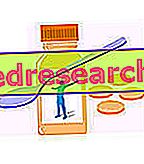Nut
The word "nut" is an abbreviation of "cooking nut" or "stock cube".
It is a commercial food that could be contextualized in the condiment group; however, still today many people choose to package it at home.

The nut has the function of flavoring and enhancing the natural characteristics of foods.
The most common formats are: pressed cubes, pasta, powder, granulai and gelatin.
Today the term "nut" is used to indicate any type of dry broth.
The nut is not a real food and performs the function of aroma / flavor. However, although used in limited quantities (a few grams), it is undoubtedly a widely used and widespread ingredient.
In many kitchens one cannot do without to enrich sauces, sauces, roasts, stews, pan-fried dishes, soups etc. On balance, the amount of nut used in human nutrition is much higher than one might think.
As anticipated, the "classic" nut also contains several additives. Among these, the most abundant is the monosodium glutamate (E621) flavor enhancer, which is the sodium salt of the amino acid glutamic acid.
The latest dietary trends suggest reducing the use of any food additives as much as possible, without discrimination.
For this reason the food industries have started producing nut and packaged foods without monosodium glutamate. However, as we will see later, sometimes a similar attitude proves to be needlessly zealous.
Commercial Dice or Home Made?
Practical or health aspects
The choice between the two varies according to the consumption that is made in the kitchen.
The commercial nut without glutamates is comfortable and well-preserved; furthermore it does not require any labor. On the other hand, the most valuable one in the form of gelatine has a significant cost.
The homemade nut requires a fairly important investment of time, even if producing a good quantity the operation should be carried out occasionally. The cost is questionable, sometimes difficult to estimate.
All types of homemade nuts are less tasty and savory than commercial ones. They have a lower yield but have the advantage of not containing significant quantities of sodium.
The "home made" nut can be produced in various different types: in cream, in cubes, in gelatine, in vegetables, in meat, in peach products, in mushrooms, frozen and in vacuum-packed tin.
The preparation method may be slightly different, but could be summarized as follows:
- Washing and cleaning (possible chopping) of the ingredients.
- Baking (possible chopping) and reaching the desired consistency.
- Placement in containers and storage (freezing or sterilization).
Homemade Dice Cube Video Recipe
Vegetable Nut in Cream - Without Baking
X Problems with video playback? Reload from YouTube Go to Video Page Go to Video Recipes Section Watch the video on youtubeKeep the homemade nut
The homemade nut in the form of a cream can be frozen, perhaps using the ice cube mold, or placed in vacuum-packed and sterilized jars. Storage can also take place at room temperature, but after opening it should be placed in the refrigerator; it is advisable to fill small vessels.
The cube cube is also preserved at room temperature. It is very comfortable but requires two firings and a drying. The energy consumption to produce it is therefore quite relevant.
The gelatin nut is an excellent solution; this can be released from the ingredients (meat or fish collagen) or added during cooking (isinglass, agar agar, carrageenan heal, etc.). It is kept sterilized in a jar in the refrigerator and once opened has a longer duration than the cream one. Adding very gelling (as for fruit jellies) it is possible to put it in a baking dish, cut it into cubes and store it in a jar in the refrigerator.
Monosodium glutamate
Monosodium glutamate is not a real nutrient, and its presence in the diet can be called useless. The human organism obtains glutamic acid and sodium from many natural foods, without the need to supplement additional quantities of glutamates; however, this does not mean that this is a harmful element.
Many are unaware that glutamic acid is already present in many natural foods such as: parmesan, milk, algae (for example kombu), mushrooms, tomatoes, etc. A few milligrams more can certainly not harm the health of a healthy person.
On the other hand it must be specified that this additive is not only present in the nut and is widely used in the food industry; it is abundant in freeze-dried soups, in instant first courses, in certain cured meats etc.
The question that many people ask is: Adding all the sources of glutamic acid is it possible for an excess to occur in the diet?
The answer is negative for most of the population or relative to the type of feeding of the single subject.
Monosodium glutamate is considered safe up to 120mg per kilogram of physiological body weight; for example 9000mg (9g) for a subject of 75kg. Considering that a nut weighs about 10-12g and contains 10-15% (1375mg or 1.4g), the subject of the example could consume up to 6-7 nuts a day without suffering any repercussions.
As glutamate can be found in hidden form in food, it is possible to say that the nut is not a health risk. In the case where the diet is such as to exceed the said safety limit with packaged / preserved / processed foods, the quantity of monosodium glutamate is to be considered of marginal importance compared to many other more problematic concentrations (excessive intake of saturated fatty acids, hydrogenated, acrylamide, polycyclic aromatics, sodium, cholesterol etc).
Obviously not all people are the same. Many studies carried out on monosodium glutamate tolerance have revealed that the symptoms of excess only appear in subjects who reveal a previous predisposition. On the other hand, there are some exceptions.
Classic dice and foods with monosodium glutamate should be limited or avoided by hypersensitive or poorly tolerant individuals. This is justifiable by the fact that in the human body glutamate acts as a neurotransmitter and that its excess tends to lower the excitability threshold of neurons.
The overdose of nut and glutamic acid has been associated for many years to the "Chinese restaurant" syndrome (characterized by headaches, dizziness, palpitations, hot flushes and redness of the face); today this correlation has been denied and it has been established that the symptomatology in question is more likely triggered by an excess of histamine.



